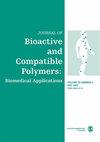Exploring polymeric biomaterials in developing neural prostheses
IF 2.2
4区 生物学
Q3 BIOTECHNOLOGY & APPLIED MICROBIOLOGY
引用次数: 1
Abstract
Neuroprosthetics, with a range of applications such as cognitive, auditory, pain relief, recording, motor, and visual prosthetics have emerged as a promising field in recent years. However, poor electrical conductivity, a high disparity between tissue and interfaces and the onset of reactive gliosis post-implantation remains major challenges in the development of neuroprostheses. The choice of biomaterials in designing the neural interfaces’ in neuroprosthetic applications is of high importance, as the overall sustained performance of neuroprosthetic devices is based on the features of materials used for the neural interfaces. Numerous biomaterials, such as metals and carbon-based materials, have been used in neuroprosthetics thus far. Nonetheless, neuroprosthetics made from polymeric biomaterials are in high demand due to their high biocompatibility, conductivity, and biostability. Furthermore, polymeric biomaterials can be used as a hybrid design to overcome the limitations of other co-biomaterials. This article makes an attempt to review the polymeric biomaterials involved in this cutting-edge technology utilized for different purposes such as substrates, coatings, and miniaturization of electrodes, that might help in enriching our understanding on neuroprosthetics.高分子生物材料在神经修复中的应用
近年来,神经义肢在认知、听觉、疼痛缓解、录音、运动和视觉义肢等领域有着广泛的应用。然而,导电性差,组织和界面之间的高度差异以及植入后反应性胶质瘤的发生仍然是神经假体发展的主要挑战。在神经义肢应用中,在设计神经接口时选择生物材料是非常重要的,因为神经义肢装置的整体持续性能是基于用于神经接口的材料的特征。迄今为止,许多生物材料,如金属和碳基材料,已被用于神经修复术。尽管如此,由高分子生物材料制成的神经义肢由于其高生物相容性、导电性和生物稳定性而需求量很大。此外,聚合物生物材料可以作为一种混合设计来克服其他共生物材料的局限性。本文将对这一前沿技术中涉及的聚合物生物材料在基底、涂层和电极小型化等方面的应用进行综述,以期有助于丰富我们对神经义肢的理解。
本文章由计算机程序翻译,如有差异,请以英文原文为准。
求助全文
约1分钟内获得全文
求助全文
来源期刊

Journal of Bioactive and Compatible Polymers
工程技术-材料科学:生物材料
CiteScore
3.50
自引率
0.00%
发文量
27
审稿时长
2 months
期刊介绍:
The use and importance of biomedical polymers, especially in pharmacology, is growing rapidly. The Journal of Bioactive and Compatible Polymers is a fully peer-reviewed scholarly journal that provides biomedical polymer scientists and researchers with new information on important advances in this field. Examples of specific areas of interest to the journal include: polymeric drugs and drug design; polymeric functionalization and structures related to biological activity or compatibility; natural polymer modification to achieve specific biological activity or compatibility; enzyme modelling by polymers; membranes for biological use; liposome stabilization and cell modeling. This journal is a member of the Committee on Publication Ethics (COPE).
 求助内容:
求助内容: 应助结果提醒方式:
应助结果提醒方式:


